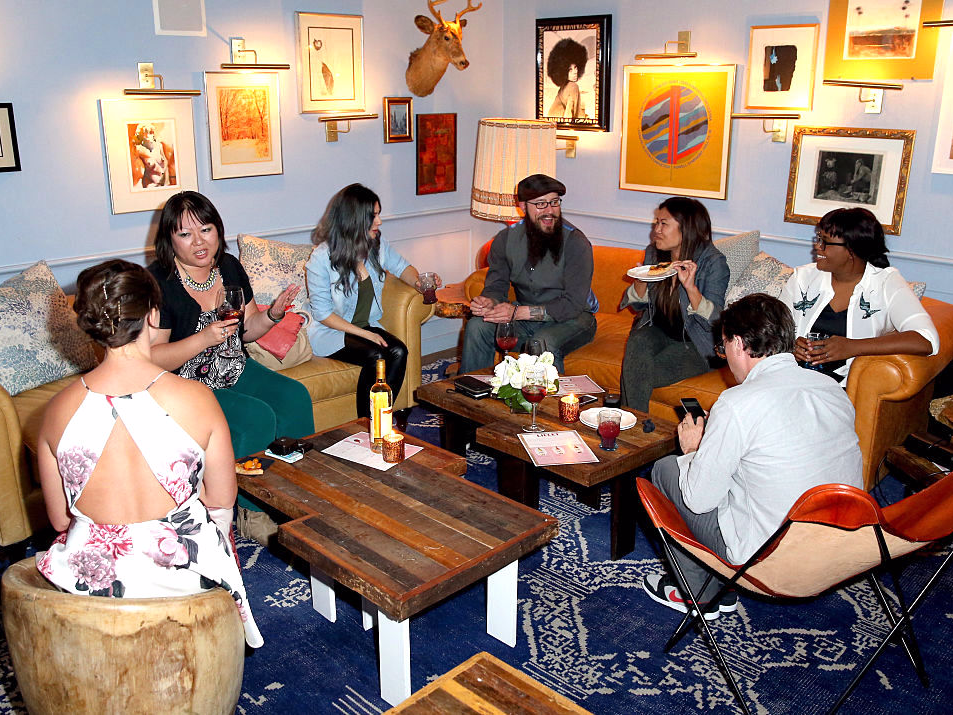Mama always said, “Network, network, network.”
Well, at least my mama did.
And I always said, “No way!” Cocktail parties, small talk, and passing out business cards is the stuff of nightmares for most people, and for good reason: They don’t lead anywhere.
They’re what J. Kelly Hoey, former lawyer, investor, networking expert, and author of “Build Your Dream Network: Forging Powerful Relationships in a Hyper-connected World,” calls “random acts of networking.”
But instead of spiraling in the opposite direction and claiming that networking is dead, pointless, or outdated, she’s refined the definition to reflect what it truly is: a way to go about solving a problem. That simple redefinition was my aha! moment that: 1. Mama was right. 2. I was kind of networking already. 3. It could be fun.
By reframing it this way, networking shed its unappealing skin of impersonal Linkedin messages and form emails to reveal the beautiful, community-building connection machine underneath.
Hoey encourages her readers to scribble notes in the margins of her book, highlight passages, and fold the pages, making her book half manual, half journal. Among entertaining infographics and engaging interviews with fascinating entrepreneurs and other expert connectors, Hoey's book is packed with highly applicable tips.
For instance:
Stop committing random acts of networking
These are the form InMail messages that lack focus, the coffee meet-and-greets with no follow-up, the cocktail parties where you spend the night in the corner on your phone, and the business cards that end up in the recycling bin. Random acts of networking leave you drained and no better off than when you started, while "effective networking requires purpose and preparation."
Use what Hoey calls the "why filter" and separate useful opportunities from the rest of the distractions and noise. Your answers to the why filter will leave you better equipped to network with a purpose and stop wasting time.
Hoey lists her four why filter questions in her book, so I decided to try them out myself. I just published a novel, so I'm attending more readings in the city and networking more. In one week, I was invited to two different readings. I didn't know whether to attend both at the risk of wearing myself out that week, only one (and how would I choose?), or none and suffer from FOMO. So I asked myself Hoey's questions:
Is the opportunity aligned with my goal(s)? Will my participation add value to the other attendees and be valuable for me? Does the opportunity expand my network and/or strengthen existing relationships? What does my gut say? (She is "a big believer in trusting your gut.")
Using Hoey's why filter made it easy to make a decision: My gut said I should pick only one of the events and the other questions helped me choose which of the two to attend. But that is only the tip of the networking iceberg.
The goal comes first
Your networking process always starts with a goal. Next, you decide what network can help you reach that goal. Finally, you figure out the tactic.
Spoiler alert: if you don't have a solid goal yet, you can use your network to figure out what it should be. Research, talk to a mentor or coach, or reach out to your community to see what they think your strengths are and what you should be pursuing.
As Hoey says, "the new question is not what you know but Who knows what you know?" When your network knows what you know, they are better equipped to make suggestions and connections.
Having a clear goal in mind will also help you formulate a plan. Once you have a goal, you'll be able to figure out who you need to know to help you achieve it. If you already know that person, get in touch. If not, it's time to forge new, two-way relationships. This doesn't mean cold-calling a complete stranger with a big ask. It means focusing on "strategy and communication tactics after you've figured out whom you're seeking help from."
Always follow up
At a recent networking event Q&A, someone asked Hoey, "What's the one takeaway we should have from this?" and before the question was even finished, Hoey responded, "Always follow up." In her book, she calls it "likely the most effective networking tool." Send a thank-you note. Update a connector if their help landed you an interview, client, or job. Don't leave people guessing about whether their own networking is effective!
No one ever said networking was easy (if they did, they were wrong). Like all things, it takes hard work and dedication. But it should be fun. So instead of bemoaning the need to network, approach it like any other problem and get out there and find a solution.
